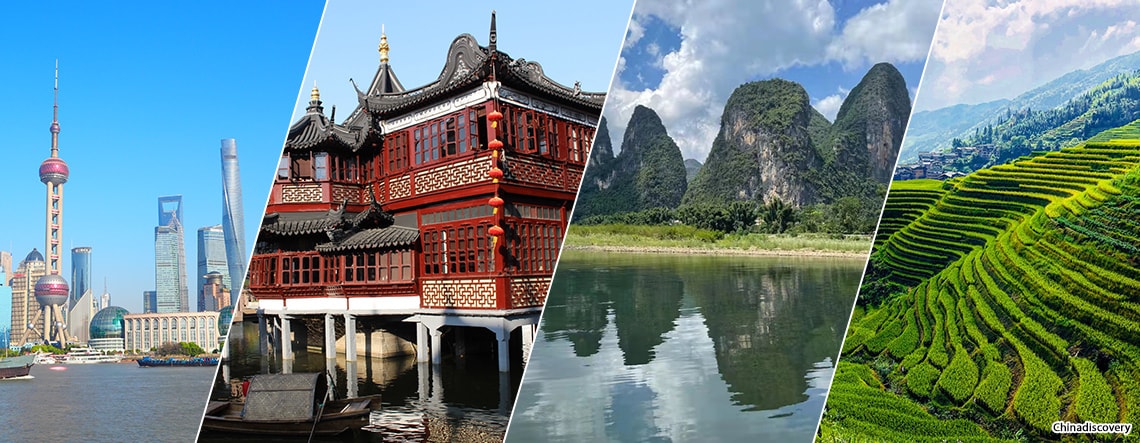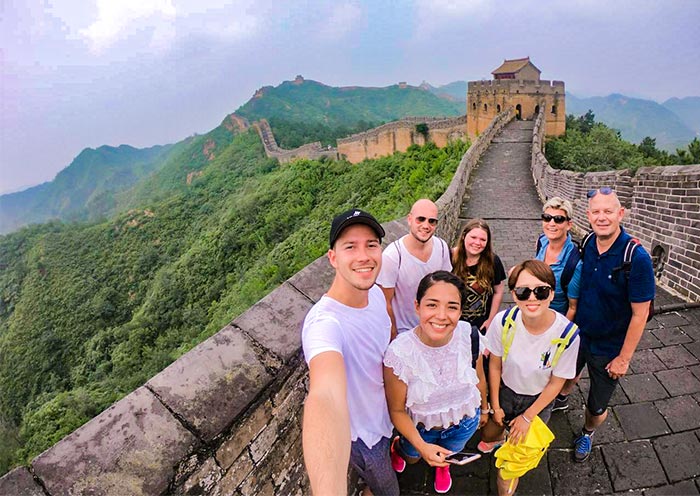20 Free Reasons To Food Guide to China Best Cities
Wiki Article
Top 10 Tips For Bargaining Etiquette When Shopping In China
1. Tips: Start at a low price and be respectful. Tip Offer between 50-70percent of the quoted price and then negotiate higher. You will be able to demonstrate your professionalism by being professional, yet respectful.
Pro: Makes it easier to establish your position without offending seller.
Con: A lower starting price can frustrate a seller in particular for items with a lower margin.
2. What is the value of the market?
Avoid overpaying by researching the cost average of an item before buying.
Pros: Reduces the risk of fraud and helps build confidence in negotiations.
Con: It is time-consuming to conduct research, especially when it comes to unique handmade items.
3. Show Genuine Intent
Tip. Sellers will bargain if they believe you're serious about buying.
Pro: It creates rapport and increases your chances of receiving the best price.
Pro: An excessive enthusiasm could signal the willingness to spend more money and could undermine your standing.
4. You are able to walk away with a strategic plan
Tip: Walk away slowly when the price isn't dropping. Sellers may contact you with a higher price.
Pro: A highly effective tactic which can result in the lowest cost.
The downside is that it can be counterproductive when the seller is unable to reduce the price of a product, especially if it's in high demand.
5. Learn Basic Mandarin Phrases
Tip: Phrases like "Tai gui le!" (Too expensive!) If you are able to make it less expensive you can use "Pianyi" or "Yidian ba?" You must show effort.
Pro: Personalizes the negotiations and softens the stance of the seller.
Con: Using a limited vocabulary may be detrimental in more complicated negotiations.
6. Be patient and calm
Tips: Negotiations may require time. Be calm and not appear in a state of panic.
Pro: Sellers reward patient and calm buyers with higher-priced deals.
Con: This requires a great deal of effort and time in order to be successful, especially when you're in highly competitive markets.
7. Bring Cash
Cash payments are more likely be accepted by merchants than digital payment.
Pro: Immediate cash offers can get discounts, especially for small-sized vendors.
Con: It is dangerous to carry cash in crowded markets because of pickpockets.
8. Group Discounts
Tip: If buying multiple items, request discounts in bulk.
Pro: You can increase your bargaining power and secure the best deal.
Pro: It could require you to purchase more than you need and these might not be appropriate for your requirements.
9. Do Not Be Afraid To Say No
Tips. Be polite and decline to negotiate and leave if the vendor does not agree to reduce the price.
Pro: This can help you avoid buyer’s remorse. It also ensures you remain within your spending limit.
Cons: You could not get the item you've always wanted.
10. You should never bargain.
The department stores and boutiques that are high-end is not the best place to find bargains.
Pro: Reduces embarrassment, and helps maintain respect for culture.
Pros: Your chances of negotiating are limited in certain circumstances.
The benefits of bargaining in China
Saves Money: Negotiating can dramatically reduce the cost of items.
Cultural Experience: Bargaining is a great way to learn more about the local culture and customs.
Personal Interaction: Forms an association with local vendors.
The cons of bargaining in China
Time-Consuming: Haggling can be long, especially for inexperienced shoppers.
Language Barrier: Communication may be difficult if one does not have a good understanding of Mandarin.
Some find bargaining can be a stressful process.
You'll be able to explore Chinese markets and haggle easily once you've mastered these techniques! Follow the top check out top attractions in this area for more tips including shopping in macau, guanlin temple, eating in zhengzhou, mount li a royal garden since the zhou dynasty, chinese kites a phoenix shaped kite, south luogu laneone of the oldest neighborhoods in beijing, chinese stone lion the common ornament in chinese traditional architecture, eating in changchun, eating in changchun, shopping in harbin and more.

Top 10 Tips For Fees Photography Rules And The Visit To The Temples In China
1. Be Prepared to Pay Entrance FeesTip: Many famous Temples charge an entrance cost that could range between Y=20 and Y=200. Budget your trip by planning ahead.
Pro: It assists you avoid surprises by helping you to determine the exact cash amount for digital transactions or cash.
Con: You may incur unanticipated costs, such as special exhibition fees.
2. Bring Cash or Electronic Payments
Some temples accept only cash, or the most popular Chinese payment methods like WeChat Pay, Alipay or WeChat Pay.
Pro: Ensures a smooth entry with no payment delays.
Con: Limited options for foreign travelers who aren't used to the digital payment app.
3. Photographic signs are a great location to take a look.
TIP: Always verify the posted signs that indicate whether photography is permitted. A lot of temples have signs that restrict photography in sacred spaces or in the vicinity of artifacts.
Pro: Stops any accidental disobedience or rule-breaking.
Pros: The regulations could vary between different areas of the temple. This requires extra attention.
4. Avoid Flash Photography
TIP: Do not use flash in places that permit photography. Flash could harm artifacts, and disrupt worshippers.
Pro: Preserves and enhances the temple's surroundings.
Con: Low-lighting may result in less-than-ideal photos.
5. Be respectful of the privacy of worshippers
A suggestion: Don't capture people in religious ceremonies, or praying, unless the person has given their permission.
Pro: Displays cultural sensitivity, respecting your personal space.
Con: Could limit your ability to capture the ambience of the temple fully.
6. Drone restrictions to be enforced
Tip. Drones are not generally allowed in temples. Be sure to check the local rules before taking photographs from the air.
Pro: No fines and no confiscation.
Con: Limits the opportunity for unusual angles in photography.
7. Prepare for Additional Fees
Tips Some temples require an extra fee to permit photography. This is especially true for equipment like DSLRs as well as tripods.
Pro: This ensures that the images are taken in top-quality and legally.
Cons: Add to trip cost
8. Dress in a modest manner
Tips: Dressing in a respectful manner is essential in temples, and a dress that is not appropriate could cause you to be denied entry to or restrictions on specific locations.
Pros: Displays respect for the setting of worship and assists you blend in.
Con: May need extra preparation in the summer heat.
9. Avoid the crowds in photo shoots
Visit the site early in the morning or later in the in the afternoon, to stay clear of crowds and capture photos without obstructions.
Pro: Enhances your enjoyment by taking more professional photos.
Cons: It can be difficult to change your schedule.
10. If Uncertain, Ask Permission
If you're not sure about the photography rules and photography, contact temple personnel for clarification or verify the any signs.
Pro: You can avoid unintentional rule breaking.
Con: Language barriers might make communication difficult.
Pay attention to Fees and Photographic Rules.
Respect the diversity of cultures:
Artifact Preservation: This protects fragile artworks and structures.
Positive Experiences : Avoid confrontations between temple staff members or worshippers.
Legal Compliance - Helps avoid penalties for not complying with photography regulations.
Cons of Following Fees & Photography Rules
Costs Increased: Additional fees such as entry fees and photography permits may increase the cost.
Restricted Creativity: Limitations may make it difficult to capture the perfect photo.
Language Barriers.
The process of research is lengthy: preparing in advance takes more time and effort.
It is possible to have a tranquil enjoyable, pleasant, and respectful visit to China's temples if you adhere to the rules and fees. This helps to preserve their cultural and spiritual integrity. Have a look at the best learn why this spot is so famous for site info including shopping in harbin, eating in fuzhou, shopping in nanjing, ancient football in china cuju in ancient china, four gentlemen in chinese culture, temple of confucius one of the three largest ancient architectural complexes, china built the worlds deepest high speed railway station under the great wall, wang zhaojun one of the four beauties in ancient china, eating in urumqi, four gentlemen in chinese culture and more.
